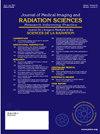儿科放射学人工智能
IF 1.3
Q3 RADIOLOGY, NUCLEAR MEDICINE & MEDICAL IMAGING
Journal of Medical Imaging and Radiation Sciences
Pub Date : 2024-10-01
DOI:10.1016/j.jmir.2024.101459
引用次数: 0
摘要
为提高服务效率和质量,人工智能在放射学领域的应用已变得十分普遍。目前,美国食品和药物管理局(FDA)批准了 366 种放射学人工智能产品,可用于常规临床实践。显然,其中一些产品对儿科放射学这一亚专科非常有用,可解决儿科放射科医生长期短缺的问题以及辐射风险、镇静和麻醉使用等其他问题。然而,由于解剖学和生理学的变化与年龄有关,导致图像采集设置和诊断过程的不同,成人和儿科放射学之间存在很大差异。因此,适合儿科放射学的人工智能产品应运而生。本次主题演讲的目的是探讨人工智能在儿科放射学临床应用的当前机遇、挑战和未来发展方向。迄今为止,美国食品及药物管理局已批准 13 种商业人工智能产品用于儿科放射学,占美国食品及药物管理局批准的放射学人工智能产品总数的 3.6%。其中约四分之一(13 个中的 3 个)是根据普通和牙科 X 光图像开发的,用于骨折和牙科疾病(如龋齿和结石)的计算机辅助检测/诊断。雖然食物及藥 物管理局已把其餘 10 種產品列為醫療影像管理及處理系統,但其中 約半數(6 種 )可分別在骨盆和髖部超聲波、心臟、腦部、肝臟和顎骨 的磁力共振掃描,以及牙科 X 光造影中,透過自動分割和量化膀胱、髖 部、心室、腦部、肝臟和顎骨等身體結構,協助兒科放射技師更快作出 診斷。因此,这些产品中的大多数可在一定程度上解决儿科放射科医生短缺的问题,提高临床医生的工作效率和生产率,而其他产品(除一种用于预测腰椎手术结果的产品外)则可减轻儿科放射科的传统负担,如 X 射线和计算机断层扫描的辐射剂量,以及磁共振成像因检查时间长而使用的镇静剂和麻醉剂。根据最近的文献综述,有许多潜在的人工智能应用可用于提高儿科放射学服务的效率和质量,如图像翻译、质量评估、采集设置选择和标记路由、计费和悬挂协议管理、机器人协助导丝插入、计算机辅助分诊和通知、自然语言处理以突出报告中的重要发现、文献检索/专家诊断支持、受训人员教育和回复患者问题的聊天机器人,但这些应用都尚未实现商业化。此外,超过三分之一(5 个)的美国食品与药物管理局批准的儿科放射学产品没有披露其性能评估细节,如涉及的临床病例和读者数量、患者人口统计数据等,只有两个产品参与了美国放射学会透明人工智能计划,并更详细地披露了其模型培训和评估安排。对于那些有其模型评估信息的产品,令人担忧的是它们的一些评估方法似乎并不合适或不健全。例如,上述膀胱分割和量化产品仅根据 122 例成年患者(年龄范围:18-90 岁)的超声波病例进行了评估,尽管缺乏普遍性是人工智能的一个众所周知的问题。尽管在以前的研究中,关于将成人放射学人工智能产品应用于儿童的结果好坏参半,但我们鼓励临床中心在自己的儿科放射学实践中评估使用成人放射学人工智能产品的可行性,如果这种人工智能应用无法用于该亚专业。这是因为,即使是用于儿科放射学的产品,临床中心也应自行进行评估,确保这些产品对病人安全有效,以避免任何潜在的医疗法律问题。鉴于儿科放射学人工智能是一个尚未充分发展的领域,有潜力解决其长期存在的问题,包括临床医生短缺、辐射、镇静和麻醉负担等,政府和其他资助机构应向制造商、研究人员和临床医生提供更多的财政激励和研究补助,以促进儿科放射学人工智能产品的开发、评估和采用。否则,人工智能的潜在优势将无法在儿科临床实践中得到广泛发挥,进而影响这一弱势患者群体,造成健康公平问题。本文章由计算机程序翻译,如有差异,请以英文原文为准。
AI in Paediatric Radiology
Use of AI has become popular in radiology for improving service efficiency and quality. Currently, there are 366 United States (US) Food and Drug Administration (FDA)-approved radiology AI products for potential use in routine clinical practice. Apparently, some of these products would be useful for its subspecialty, paediatric radiology to address the long-standing problem of paediatric radiologist shortage as well as other issues such as radiation risk, and sedation and anaesthesia use. However, great differences exist between adult and paediatric radiology because of age-dependant changes of anatomy and physiology leading to variations of image acquisition settings and diagnostic processes. Hence, AI products suitable for paediatric radiology have been developed. The purpose of this keynote presentation is to explore current opportunities, challenges and way forward for clinical use of AI in paediatric radiology.
As yet, 13 commercial AI products have been approved by FDA for paediatric radiology use, i.e. 3.6% of the total number of FDA-approved radiology AI products. Around a quarter of these (3 out of 13) are developed for computer aided detection / diagnosis of fractures and dental diseases such as caries and calculi based on general and dental x-ray images. Although FDA has determined the other 10 products as medical image management and processing systems (MIMPS), about half (6) can assist paediatric radiologists in making diagnoses faster through automatic segmentation and quantification of body structures such as urinary bladder, hip, cardiac chamber, brain, liver, and jaw bone in pelvis and hip ultrasound, cardiac, brain and liver magnetic resonance imaging (MRI), and dental x-ray, respectively. Hence, the majority of these products can address the paediatric radiologist shortage issue to some extent by increasing clinician efficiency and productivity while the others (except one designed for lumbar spine surgical outcome prediction) would be useful to alleviate the traditional burdens of paediatric radiology such as x-ray and computed tomography radiation dose, and sedation and anaesthesia use in MRI due to long examination time.
Nonetheless, the application areas of these existing FDA-approved products appear limited and only cover certain types of paediatric examinations and diseases. According to recent literature reviews, there are lots of potential AI applications for improving paediatric radiology service efficiency and quality such as image translation, quality assessment, acquisition setting selection and labelling for routing, billing and hanging protocol management, robotic assistance in guidewire insertion, computer assisted triage and notification, natural language processing for highlighting significant findings in reports, literature search / expert seeking for diagnosis support, trainee education and chatbot for responding to patient questions but none of them have become commercially available. Also, more than one-third (5) of the FDA-approved paediatric radiology products do not have any disclosures of their performance evaluation details, e.g. number of clinical cases and readers involved, patient demographics, etc., and only two have been involved in the American College of Radiology Transparent-AI program with their model training and evaluation arrangements disclosed in more detail. For those products which have their model evaluation information, it is concerning that some of their evaluation approaches seem not appropriate or robust. For example, the aforementioned bladder segmentation and quantification product has only been evaluated based on 122 ultrasound cases of adult patients (age range: 18-90 years) despite a lack of generalisability being a well-known problem of AI.
Although mixed results are noted in previous studies about applying adult radiology AI products to children, clinical centres are encouraged to evaluate feasibility of using adult radiology AI products in their own paediatric radiology practice when such AI applications unavailable for this subspeciality. This is because even for products intended for paediatric radiology use, the clinical centres should conduct their own evaluation to ensure these products being safe and effective for their patients to avoid any potential medico-legal issues. Given that the paediatric radiology AI is an underdeveloped area which has potentials to address its long-standing issues including the clinician shortage, radiation, and sedation and anaesthesia burdens, more financial incentives and research grants from governments and other funding bodies should be provided to manufacturers, researchers and clinicians for the paediatric radiology AI product development, evaluation and adoption. Otherwise, potential advantages of AI cannot be widely realised in paediatric clinical practice, subsequently, affecting this vulnerable patient group and resulting in health equity issue.
求助全文
通过发布文献求助,成功后即可免费获取论文全文。
去求助
来源期刊

Journal of Medical Imaging and Radiation Sciences
RADIOLOGY, NUCLEAR MEDICINE & MEDICAL IMAGING-
CiteScore
2.30
自引率
11.10%
发文量
231
审稿时长
53 days
期刊介绍:
Journal of Medical Imaging and Radiation Sciences is the official peer-reviewed journal of the Canadian Association of Medical Radiation Technologists. This journal is published four times a year and is circulated to approximately 11,000 medical radiation technologists, libraries and radiology departments throughout Canada, the United States and overseas. The Journal publishes articles on recent research, new technology and techniques, professional practices, technologists viewpoints as well as relevant book reviews.
 求助内容:
求助内容: 应助结果提醒方式:
应助结果提醒方式:


